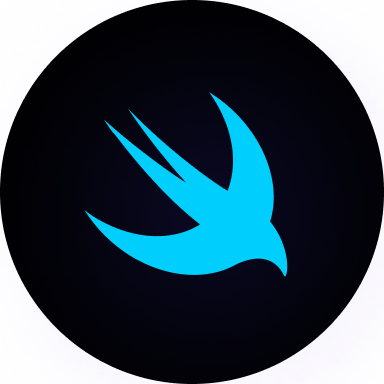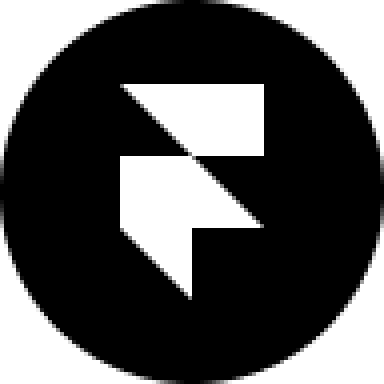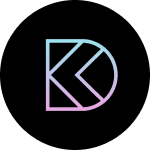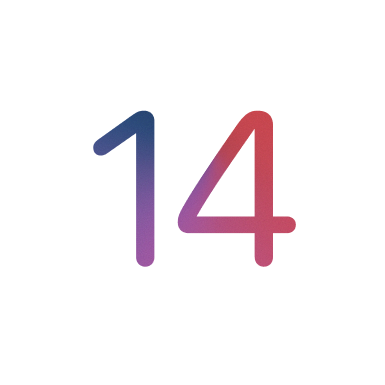Design for iOS 11
Add to favorites
Designing an iOS App from scratch in Sketch
Play video
Learn Sketch
1
Learn Sketch
23:28
2
Powerful Start in Sketch
22:49
3
Design for iOS 11
31:30
4
Design for iPhone X
28:23
5
Designing for iPad
11:36
6
Design for Web
25:12
7
Design for Web Part 2
25:11
8
Tricks and Keyboard Shortcuts
20:43
9
Sketch Plugins
12:09
10
Nested Symbols
9:14
11
Sketch Libraries
7:00
12
Version Control
18:53
13
Working with Data
10:29
14
Adaptive Layouts
7:33
15
Working with Vector
20:12
16
Exporting Assets
13:44
17
Styleguide and Handoff
9:11
18
Advanced Techniques
12:40
19
Intro to Framer
27:51
20
Previewing and Sharing
7:22
21
Prototyping in Keynote
3:33
Design+Code Home Screen
We will be designing the new Design+Code Home screen in this tutorial. It contains a hero image, headline, introduction, call-to-action button, chapter and people section.

Setting Up the Basics
It is recommended to design at 1x size because it will be easy when you are exporting assets to 2x and 3x. We are going to use iPhone 8 at 1x (375x667) for this Home screen design.
Create an Artboard
Create an Artboard by choosing Insert › Artboard from the toolbar, or press A. A list of preset Artboard sizes will appear in the Inspector on the right. All these dimensions are already at 1x. You can change to Material Design or Responsive Web from the drop-down, along with a toggle for Portrait and Landscape orientations. Click on the iPhone 8 from the list and Sketch will create an Artboard for you.
Layout Margin
In this Home screen, we use a layout margin of 16px from the left and the right. Like this we ensure that the user interface stay focus in the middle of the screen and doesn’t look cramped against the edge.
Choose View › Canvas › Show Rulers or press Control R to display Rulers. Select the Artboard, move the mouse over to the top ruler and click at 16px area; you will get a vertical guideline. You can draw a 16px box, select it, move the mouse over to the top ruler, and the line will snap automatically to the edge of the box. With this, we can make sure the line is in the right margin.
Rulers Guide
You can change the color of the Rulers guide by going to Sketch Preferences › Canvas › Guides and click on the color palette. We use Magenta because it has more visibility when you are designing in Sketch.
iOS UI Design Library
Because we’re designing an iOS app, we try to make the design as realistic as possible. We can use the Sketch preset iOS UI Design library to grab elements that we need. Go to Sketch Preferences › Libraries to make sure the iOS UI Design library is enabled.

Status Bar
We need a Status Bar for the top of the screen. You can find the Status Bar in the Insert menu at the Toolbar. If you’ve installed Sketch Runner, you can search it easily. Go to Plugins › Runner › Run… or press Command + ‘ (apostrophe) to activate Sketch Runner. Select the Insert tab and type the keyword “status bar black” and double-click the Symbol and then, place it in the Artboard.
Replace Symbol
Our hero image has a dark background, so it is good to change the Status Bar to the white version. So, we can have a better contrast on top of each element. Right-click the Status Bar and go to Replace With › iOS UI Design › Bars › Status › White and click on it. Now, you have a white status bar on the Home screen.
Hero Section
Our Hero Section has a background image, headline, and some stats. We can draw the user attention to start exploring the app by using an attractive headline, real statistics, and a beautiful background.
Insert a Background Image and Masking
Your image might not be cropped in the exact screen size as your design. You can use Masking to place the hero image layer in a container. Draw a container using the Rectangle tool and then, put your image on top of it. You can drag the picture from anywhere on your Mac and drop it in the Sketch Artboard, or you can just copy the image file by pressing Command C and then go to Sketch and press Command V to paste it in the Canvas.
Once the image is inserted in the same Artboard as the container, select both of them, then right-click and choose Mask in the context menu. Now the layer at the bottom, which is the container, will become a Mask for the image. Adjust the image to the position as you like.
San Francisco Font
Next step is to put the hero headline. You can use a larger font size for the headline. It is hard to choose a suitable typeface and also not recommended to use more than two different typefaces. If you’re not sure which font to use for iOS app design, you can always go with Apple’s San Francisco font. The San Francisco typeface was designed to be highly legible at both small and large sizes. For font size equal to 19pt and below, you can use SF Pro Text; for font size equivalent to 20pt or above, you should use SF Pro Display. Downloadthe San Francisco family of fonts or read more about it in the Apple Human Interface Guidelines.

Insert Headline
We are going to insert “Learn to design & code for iOS 11” as the headline. Go to Insert › Text or press T to start typing. Resize the text container to match the background image so that you won’t cover up the iPhone mockup. You will notice that we’re using a different font weight and style for the headline. With this, we can make the headline looks more exciting and less monotonous.
Drop Shadows
The headline might look too flat on top of the hero image. You can add a Shadows to the text layer and give more depth between the text and image. Select the text layer, go to the Inspector panel and click on Shadows. A default value of Shadows will be applied to the text. Make some adjustments to the Shadows so that it will look smoother and natural.
Statistics and Background Blur
I’ve done the one statistics section with a dark background, but it doesn’t look appealing to me. What we can do is to make it half transparent and then, add a Background Blur to the dark background. Select the dark background layer, then go to the Inspector panel and change the Fills Opacity to 50%. Then, click the Gaussian Blur drop-down and choose the Background Blur and set the Amount to 24px. Now, the statistics section looks more appealing.
Finish the Statistics
Let’s finish up this statistics section by completing the second stat on the right. Since the layout of the stat is pretty much the same as the left one, we can duplicate it by selecting it and hold the ALT key to drag it to the right. Now, we can start inserting the correct text for this stat.
So far, we have completed all the elements of the Hero Section, and we should group all these layers into one Group called “Hero Section”. That way, the file is more organized.
Get the Book Section
We have completed the Hero Section. Let’s move on to the Get the Book section. In this part, we have a book image, a short description, and a call-to-action button.
Consistent Spacing
Having a consistent spacing in the design will make your layout look more clean and legible. This can help users have more breathing space to consume the content in the app. We are using a 50px padding around the Get the Book section. Between the book image and descriptions, there is 20px. Between the description and the button is 50px.

Call to Action Button
Apple highly recommends to size all the controls at a minimum tappable area of 44pt x 44pt. With this, users can efficiently tap and interact with the buttons in your app.
Type “Get the Book” for the button label and then, set the font size to 20px. We can draw a shape with a 44px height and put it behind the text layer. Give the button a 20px padding to the left and right. Add a radius of 44px to make the button rounded. Align the text in the center of the button and apply a color to it. Here we apply a gradient for the button. While selecting the button, click the Fills color in the Inspector panel and choose the second option, Linear Gradient. We apply #9C6FFF for the left and #5334F5 for the right in the spectrum of colors. You can adjust the position of the gradient by dragging the top dot to the top left and bottom dot to the bottom right. Lastly, change the text color to white. Now, we have a good looking and approachable button.
If you are not sure what color to use for the buttons, we recommend using blue. About 50% of apps made by Apple uses blue for their controls.
Chapter and People Section
We are going to use a Card-based user interface for the Chapter and People section. The card-based design model is used almost everywhere. Card contents are easy to digest, visually appealing and flexible for different kinds of screen sizes from iPhone to iPad and Desktop. All these factors make card design popular and with a great usability.
Card-based Design
This card design is going to be used multiple times in the Design+Code iOS app. We will need to convert it to Symbol. The Chapter card content includes a section title, description and background image. Select all the relevant layers for the Chapter Card and click Create Symbol from the toolbar to convert them into Symbols.
Duplicating
Once we have done converted the card into a Symbol, we can start duplicating more to the right. Like this, the users can swipe left to view more cards.
People Cards
Finally, we have the card design. Repeat the same workflow for the People section card design. For that section, we use a darker background color so that it can be contrasted against the Chapter section. We also show this section in the footer. Our goal is to show the number of readers and the well-known companies that read the Design+Code too. With this, the Home screen is done!
Templates and source code
Download source files
Download the videos and assets to refer and learn offline without interuption.
Design template
Source code for all sections
Video files, ePub and subtitles
Videos
ePub
Assets
Subtitles
1
Learn Sketch
Introduction to Sketch Basic Tools
23:28
2
Powerful Start in Sketch
Strong Foundations for your Sketch Workflow
22:49
3
Design for iOS 11
Designing an iOS App from scratch in Sketch
31:30
4
Design for iPhone X
Designing and adapting for iPhone X in Sketch
28:23
5
Designing for iPad
Designing an iPad app from Scratch
11:36
6
Design for Web
Designing a Website from Scratch
25:12
7
Design for Web Part 2
Designing a Website from Scratch 2
25:11
8
Tricks and Keyboard Shortcuts
Boost your productivity in Sketch
20:43
9
Sketch Plugins
Essential Sketch Plugins for Designers and Developers
12:09
10
Nested Symbols
Design with More Flexibility by Nesting Symbols
9:14
11
Sketch Libraries
Share Symbols with Other Designers
7:00
12
Version Control
The Github for Designers
18:53
13
Working with Data
Make your design meaningful with real content
10:29
14
Adaptive Layouts
Working with Multiple Resolutions
7:33
15
Working with Vector
Vector Techniques in Sketch
20:12
16
Exporting Assets
Delivering Assets to Multiple Devices in Sketch
13:44
17
Styleguide and Handoff
Consistent design language in your team
9:11
18
Advanced Techniques
Master Sketch with these Tricks
12:40
19
Intro to Framer
Design and Code animations with Framer
27:51
20
Previewing and Sharing
Test drive on your devices
7:22
21
Prototyping in Keynote
Prototyping in Keynote Using Magic Move
3:33
Meet the instructors
We all try to be consistent with our way of teaching step-by-step, providing source files and prioritizing design in our courses.
Pizza Yap
UI/UX Designer
I'm a product designer, UI, UX, and writer from Malaysia and currently based in Singapore. I'm focusing on interactive experiences for web and mobile apps.
Meng To
I design, code and write
Meng To is the author of Design+Code. Meng started off his career as a self-taught designer from Montreal and eventually traveled around the world for 2 years as his US VISA was denied. During his travels, he wrote a book which now has 35,000 readers.
40 courses - 190 hours

Master AI Prompting for Stunning UI
Learn how to leverage AI tools like Aura for creating beautiful designs, working with templates, and experimenting with advanced prompts. A concise guide for designers and developers to level up their skills.
6 hrs

Build SwiftUI apps for iOS 18 with Cursor and Xcode
In this course, we'll explore the exciting new features of SwiftUI 6 and Xcode 16 for building iOS 18 apps. From mesh gradients and text animations to ripple effects, you'll learn how to create polished, highly custom apps using the latest workflows. We'll also dive into using Cursor and Claude AI for AI-driven coding, helping you start strong and customize your apps.
5 hrs

Create your Dream Apps with Cursor and Claude AI
Learn to build your dream web apps from the ground up using Cursor, Claude AI, and a suite of powerful AI tools. This course covers everything you need, including React for frontend development, Firebase for backend integration, and Stripe for handling payments. You’ll also dive into advanced AI tools like Claude Artifacts, Galileo AI, v0.dev for UI, Ideogram for design generation, and Cursor Composer for full-scale development.
6 hrs

Build a React Site from Figma to Codux
In this course, you'll learn to build a website from scratch using Codux, starting with a Figma template. You’ll master responsive design, collaborate with developers on a real React project, export CSS from Figma using Locofy, set up breakpoints with media queries, add CSS animations, improve SEO, create multiple pages with React Router, and publish your site. By following best practices, you’ll bridge design and development, improve your web design skills.
2 hrs

Create 3D UI for iOS and visionOS in Spline
Comprehensive 3D Design Course: From Basics to Advanced Techniques for iOS and visionOS using SwiftUI
3 hrs

Master No-Code Web Design with Framer
In this free Framer course, you'll learn to create modern, user-friendly interfaces. Start with dark mode and glass designs, then move from Figma to Framer, using vectors and auto layout for responsive websites. Add animations, interactive buttons, and custom components with code. Finally, you'll craft a design system suitable for teamwork or solo projects, all in a straightforward and practical approach.
4 hrs

Build SwiftUI Apps for iOS 17
In this course, we’ll be exploring the fresh and exciting features of SwiftUI 5! As we craft a variety of iOS apps from the ground up, we'll delve deep into the treasure trove that is SwiftUI's user interface, interactions, and animations.
4 hrs

Build Beautiful Apps with GPT-4 and Midjourney
Design and develop apps using GPT-4 and Midjourney with prompts for SwiftUI, React, CSS, app concepts, icons, and copywriting
4 hrs

Build SwiftUI apps for iOS 16
Create animated and interactive apps using new iOS 16 techniques using SwiftUI 4 and Xcode 14
5 hrs

Build a 3D Site Without Code with Framer
Design and publish a responsive site with 3D animation without writing a single line of code
3 hrs

Create 3D Site with Spline and React
Design and code a landing page with an interactive 3D asset using Spline and CodeSandbox
1 hrs

Build an Animated App with Rive and SwiftUI
Design and code an iOS app with Rive animated assets, icon animations, custom layouts and interactions
3 hrs

Build a SwiftUI app for iOS 15 Part 3
Design and code a SwiftUI 3 app with custom layouts, animations and gestures using Xcode 13, SF Symbols 3, Canvas, Concurrency, Searchable and a whole lot more
4 hrs

Build a SwiftUI app for iOS 15 Part 2
Design and code a SwiftUI 3 app with custom layouts, animations and gestures using Xcode 13, SF Symbols 3, Canvas, Concurrency, Searchable and a whole lot more
3 hrs

Build a SwiftUI app for iOS 15
Design and code a SwiftUI 3 app with custom layouts, animations and gestures using Xcode 13, SF Symbols 3, Canvas, Concurrency, Searchable and a whole lot more
4 hrs

React Livestreams
Learn how we can use React Hooks to build web apps using libraries, tools, apis and frameworks
4 hrs

Design Founder Livestreams
A journey on how we built DesignCode covering product design, management, analytics, revenue and a good dose of learning from our successes and failures
2 hrs

SwiftUI Advanced Handbook
An extensive series of tutorials covering advanced topics related to SwiftUI, with a main focus on backend and logic to take your SwiftUI skills to the next level
4 hrs

iOS Design Handbook
A complete guide to designing for iOS 14 with videos, examples and design files
2 hrs

SwiftUI Handbook
A comprehensive series of tutorials covering Xcode, SwiftUI and all the layout and development techniques
7 hrs

Build a web app with React Hooks
Learn how we built the new Design+Code site with React Hooks using Gatsby, Netlify, and advanced CSS techniques with Styled Components.
4 hrs

UI Design Handbook
A comprehensive guide to the best tips and tricks for UI design. Free tutorials for learning user interface design.
2 hrs

Figma Handbook
A comprehensive guide to the best tips and tricks in Figma. Not affiliated with or endorsed by Figma, Inc.
6 hrs

SwiftUI for iOS 14
Build a multi-platform app from scratch using the new techniques in iOS 14. We'll use the Sidebar and Lazy Grids to make the layout adaptive for iOS, iPadOS, macOS Big Sur and we'll learn the new Matched Geometry Effect to create beautiful transitions between screens without the complexity. This course is beginner-friendly and is taught step-by-step in a video format.
3 hrs

SwiftUI Livestreams
This is a compilation of the SwiftUI live streams hosted by Meng. Over there he talks and teaches how to use design systems, typography, navigation, iOS 14 Design, prototyping, animation and Developer Handoff.
19 hrs

UI Design Livestreams
This is a compilation of the UI live streams hosted by Meng. Over there he talks and teaches how to use design systems, typography, navigation, iOS 14 Design, prototyping, animation and Developer Handoff.
26 hrs

UI Design for Developers
In this course we'll learn how to use design systems, set up break points, typography, spacing, navigation, size rules for adapting to the iPad, mobile and web versions, and different techniques that translate well from design to code.
3 hrs

Build an app with SwiftUI Part 3
This course was written for designers and developers who are passionate about design and about building real apps for iOS, iPadOS, macOS, tvOS and watchOS. SwiftUI works across all of those platforms. While the code is not a one-size-fits-all, the controls and techniques involved can apply to all platforms. It is beginner-friendly, but it is also packed with design tricks and cool workflows about building the best UIs and interactions.
4 hrs

Build an app with SwiftUI Part 2
This course was written for designers and developers who are passionate about design and about building real apps for iOS, iPadOS, macOS, tvOS and watchOS. SwiftUI works across all of those platforms. While the code is not a one-size-fits-all, the controls and techniques involved can apply to all platforms. It is beginner-friendly, but it is also packed with design tricks and cool workflows about building the best UIs and interactions.
4 hrs

Build a full site in Webflow
Webflow is a design tool that can build production-ready experiences without code. You can implement CSS-driven adaptive layouts, build complex interactions and deploy all in one tool. Webflow also comes with a built-in content management system (CMS) and Ecommerce for creating a purchase experience without the need of third-party tools.
3 hrs

Advanced Prototyping in ProtoPie
ProtoPie is a cross-platform prototyping tool that creates prototypes nearly as powerful as those made with code, with half of the efforts, and zero code. It's perfect for designers who want to quickly experiment with advanced interactions using variables, conditions, sensors and more.
3 hrs

Build an app with SwiftUI Part 1
This course was written for designers and developers who are passionate about design and about building real apps for iOS, iPadOS, macOS, tvOS and watchOS. SwiftUI works across all of those platforms. While the code is not a one-size-fits-all, the controls and techniques involved can apply to all platforms. It is beginner-friendly, but it is also packed with design tricks and cool workflows about building the best UIs and interactions.
4 hrs

React Native for Designers Part 2
React Native is a popular Javascript framework that builds on top of React by using native components to create a real mobile app indistinguishable from one made using Xcode or Android Studio. The main difference with native development is that you get to use CSS, hot-reload, Javascript and other familiar techniques that the Web has grown over the past decades. Most importantly, you're building for both iOS and Android using the same codebase.
3 hrs

React Native for Designers
React Native is a popular Javascript framework that builds on top of React by using native components to create a real mobile app indistinguishable from one made using Xcode or Android Studio. The main difference with native development is that you get to use CSS, hot-reload, Javascript and other familiar techniques that the Web has grown over the past decades. Most importantly, you're building for both iOS and Android using the same codebase.
5 hrs

Design System in Figma
Learn how to use and design a collaborative and powerful design system in Figma. Design Systems provide a shared library of reusable components and guidelines and that will let you build products much faster
3 hrs

React for Designers
Learn how to build a modern site using React and the most efficient libraries to get your site/product online. Get familiar with Grid CSS, animations, interactions, dynamic data with Contentful and deploying your site with Netlify.
3 hrs

Swift Advanced
Learn Swift a robust and intuitive programming language created by Apple for building apps for iOS, Mac, Apple TV and Apple Watch
9 hrs

Learn Swift
Learn Swift a robust and intuitive programming language created by Apple for building apps for iOS, Mac, Apple TV and Apple Watch
4 hrs

Learn Sketch
Learn Sketch a design tool entirely vector-based and focused on user interface design
5 hrs

Learn iOS 11 Design
Learn colors, typography and layout for iOS 8
1 hrs
